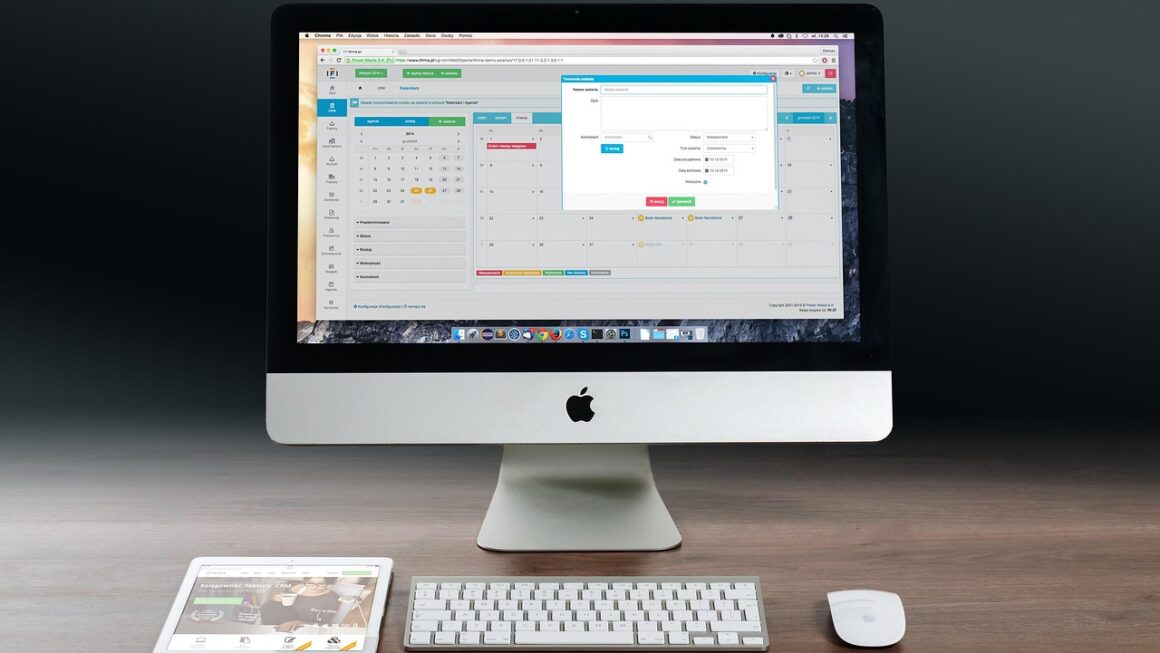The shift towards remote work has redefined the employee lifecycle, making remote onboarding a critical component of successful talent integration. No longer can companies rely on traditional in-office introductions and water cooler chats. A robust and well-designed remote onboarding process is essential for engaging new hires, fostering a sense of belonging, and ultimately, maximizing their contribution to the company. This blog post delves into the key elements of a successful remote onboarding strategy, providing actionable insights to help organizations create a welcoming and productive experience for their remote employees.
What is Remote Onboarding and Why Does It Matter?
Defining Remote Onboarding
Remote onboarding is the process of integrating new employees into a company’s culture, processes, and teams when the employee is working remotely. It encompasses all the activities typically associated with traditional onboarding, but adapted for a virtual environment. This includes everything from paperwork and introductions to training and team building, all delivered through digital channels.
The Importance of Effective Remote Onboarding
Effective remote onboarding is crucial for several reasons:
- Increased Employee Engagement: A strong onboarding process makes new hires feel valued and connected, leading to higher engagement levels. Engaged employees are more productive and likely to stay with the company longer.
- Improved Productivity: A structured onboarding program provides new hires with the tools and knowledge they need to quickly become productive in their roles. Clear expectations and access to resources are key.
- Reduced Turnover: Poor onboarding is a significant contributor to early employee turnover. Investing in a positive onboarding experience reduces the risk of losing new hires before they even reach their full potential. Did you know that according to a SHRM study, organizations with a standard onboarding process experience 50% greater new-hire retention?
- Stronger Company Culture: Remote onboarding provides an opportunity to instill company values and build a sense of community, even when employees are geographically dispersed.
- Enhanced Compliance: Ensures new hires understand company policies, legal requirements, and security protocols from day one.
Designing a Remote Onboarding Program: Key Elements
Pre-Onboarding: Setting the Stage for Success
Pre-onboarding begins even before the employee’s first official day. It’s about creating excitement and preparing the employee for a smooth transition.
- Welcome Package: Send a welcome package containing company swag, a handwritten note from the manager, and any essential equipment the employee needs. This small gesture makes a big impact. For example, consider including a company branded water bottle, notebook, and pen, along with a welcome letter detailing the first week’s agenda.
- Paperwork Completion: Streamline the paperwork process by using digital tools for signing contracts, tax forms, and other necessary documents. Utilize secure document management systems like DocuSign or HelloSign to ensure compliance and efficiency.
- IT Setup: Ensure that the employee’s computer, software, and access to company systems are set up before their start date. Provide clear instructions and a dedicated IT support contact for any technical issues.
- Introduction to the Team: Share a team directory with photos and brief bios to help the new hire get to know their colleagues. Consider a pre-first-day virtual “meet and greet” to break the ice.
The First Day and Week: Creating a Positive First Impression
The first day and week are critical for setting the tone and building confidence.
- Warm Welcome: Start with a personal welcome message from the CEO or a senior leader. This shows the employee that they are valued and appreciated.
- Virtual Tour: Provide a virtual tour of the company’s office space (if applicable) or a walkthrough of key online resources and platforms. This can be achieved through pre-recorded videos or interactive virtual environments.
- Manager Introduction: Schedule a one-on-one meeting with the manager to discuss expectations, goals, and priorities. Use this opportunity to build rapport and establish a strong working relationship.
- Team Introductions: Facilitate introductions to key team members through virtual meetings or introductions via email. Encourage team members to reach out and welcome the new hire. Consider a virtual team lunch or coffee break.
- Training and Development: Provide structured training on company processes, tools, and systems. Use a combination of live virtual sessions, pre-recorded videos, and online learning modules. Platforms like Lessonly and TalentLMS are good options.
Ongoing Support and Development: Fostering Long-Term Success
Onboarding is not a one-time event but an ongoing process of support and development.
- Regular Check-Ins: Schedule regular check-in meetings with the manager to provide feedback, address concerns, and track progress. Consider weekly one-on-ones for the first few months, then transition to bi-weekly or monthly meetings.
- Mentorship Program: Pair new hires with experienced employees who can provide guidance, support, and mentorship. This helps new hires integrate into the company culture and build relationships.
- Continuous Learning Opportunities: Provide access to online courses, workshops, and conferences to support ongoing professional development. Encourage employees to take advantage of these opportunities to enhance their skills and knowledge.
- Feedback Mechanisms: Implement regular feedback surveys and performance reviews to gather insights on the onboarding process and identify areas for improvement. Utilize anonymous feedback forms to encourage honest and open communication.
Technology and Tools for Remote Onboarding
Leveraging Technology for Seamless Integration
Technology plays a vital role in facilitating a successful remote onboarding process. Utilizing the right tools can streamline tasks, enhance communication, and create a more engaging experience.
- Video Conferencing: Platforms like Zoom, Microsoft Teams, and Google Meet are essential for virtual meetings, training sessions, and team building activities.
- Communication Tools: Tools like Slack, Microsoft Teams, and Google Chat facilitate real-time communication and collaboration among team members.
- Project Management Software: Platforms like Asana, Trello, and Jira help manage onboarding tasks, track progress, and assign responsibilities.
- Learning Management Systems (LMS): LMS platforms like TalentLMS, LearnUpon, and Litmos provide a centralized hub for delivering training content, tracking progress, and assessing knowledge.
- Onboarding Software: Dedicated onboarding software like BambooHR, Lessonly, and Kissflow HR streamlines the entire onboarding process, from pre-boarding to ongoing support.
- Document Management Systems: Tools like Google Drive, Dropbox, and OneDrive provide secure and centralized storage for important documents and resources.
Practical Example: Using a Digital Onboarding Checklist
A digital onboarding checklist can be created using project management software like Asana or Trello. The checklist should include tasks for the HR team, the manager, and the new hire, with clear deadlines and assigned responsibilities. For example:
- HR Team:
- Send welcome email with onboarding agenda (Due: 1 week before start date)
- Set up employee accounts and permissions (Due: 2 days before start date)
- Schedule introductory meetings with key stakeholders (Due: First week)
- Manager:
- Prepare welcome message and introduction (Due: 1 day before start date)
- Schedule one-on-one meeting to discuss goals and expectations (Due: First day)
- Introduce new hire to team members (Due: First week)
- New Hire:
- Complete onboarding paperwork (Due: Before start date)
- Attend scheduled training sessions (Due: First week)
- Review company policies and procedures (Due: First week)
Overcoming Challenges in Remote Onboarding
Addressing Common Hurdles
While remote onboarding offers numerous benefits, it also presents unique challenges that organizations must address to ensure its success.
- Building a Sense of Community: It can be difficult to foster a sense of community and belonging when employees are not physically together. Implement virtual team-building activities, social events, and online forums to encourage interaction and connection.
- Maintaining Engagement: Remote employees can easily become disengaged if they don’t feel connected to the company or their colleagues. Regularly communicate company updates, provide opportunities for feedback, and recognize employee achievements.
- Providing Adequate Support: Remote employees may require additional support to navigate new systems, processes, and technologies. Ensure they have access to readily available resources and dedicated support channels.
- Measuring Onboarding Success: It can be challenging to measure the effectiveness of remote onboarding programs. Track key metrics such as employee engagement, productivity, and retention to assess the impact of your onboarding efforts. Utilize surveys and feedback sessions to gather qualitative data.
Example: Creating a Virtual Water Cooler
To combat the lack of informal interactions, create a virtual “water cooler” using a dedicated channel on Slack or Microsoft Teams. Encourage employees to share personal updates, ask questions, and engage in casual conversations. This can help build camaraderie and foster a sense of connection.
Conclusion
Remote onboarding is no longer a “nice-to-have,” but a “must-have” for organizations looking to attract and retain top talent in today’s evolving work landscape. By implementing a well-designed, tech-enabled, and people-focused remote onboarding program, companies can create a welcoming and productive experience for their new hires, leading to increased engagement, improved productivity, and reduced turnover. Embracing a comprehensive and adaptable remote onboarding strategy is an investment in the future success of your organization and its remote workforce.




